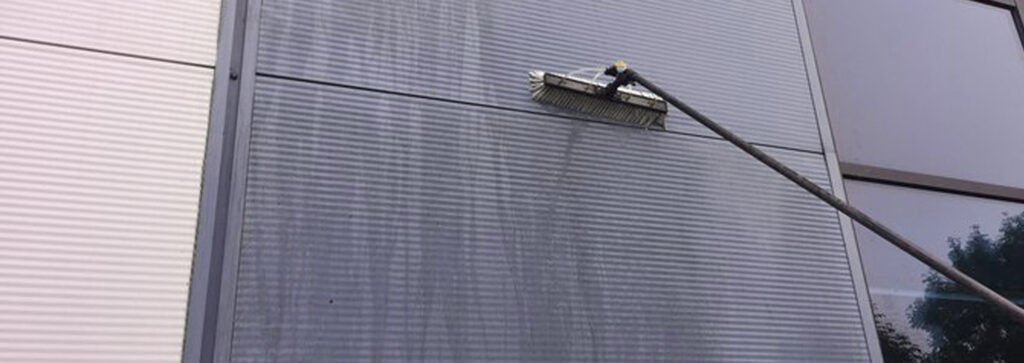In recent years, the field of commercial cladding cleaning has witnessed a significant transformation driven by innovative techniques that are revolutionizing building exteriors. These advancements are not merely aesthetic but also crucial for maintaining the integrity and longevity of structures in urban landscapes. One of the most prominent trends is the shift towards eco-friendly cleaning solutions. Traditional methods often relied on harsh chemicals that could damage cladding materials and harm the environment. Today, however, there is a growing preference for biodegradable detergents and water-based cleaning agents that minimize environmental impact without compromising on effectiveness. Moreover, technological innovations have played a pivotal role in enhancing cleaning processes. Automated systems, for instance, are increasingly being adopted to streamline operations and ensure consistent results. These systems utilize robotic arms or drones equipped with specialized cleaning tools to reach difficult-to-access areas safely and efficiently.

This not only reduces the reliance on manual labor but also minimizes the risk of accidents during cleaning operations, making it a safer option for workers and pedestrians alike. Another notable trend is the application of nanotechnology in cladding cleaning. Nanocoatings and nano sealants are being used to create protective layers on building surfaces, making them more resistant to dirt, pollutants, and weathering. These coatings not only keep buildings looking pristine for longer but also facilitate easier maintenance by preventing dirt buildup and reducing the frequency of cleaning cycles. The application of nanotechnology represents a significant leap forward in the field, offering a proactive approach to preserving building aesthetics and structural integrity. In addition to technological advancements, sustainability has become a key focus in cladding cleaning company in Manchester practices. Building owners and managers are increasingly prioritizing solutions that minimize water usage and energy consumption. Techniques such as steam cleaning and water reclamation systems are gaining popularity for their ability to achieve thorough cleaning results while conserving resources. This shift towards sustainable cleaning practices not only aligns with regulatory requirements and corporate sustainability goals but also enhances the overall environmental footprint of buildings.
Furthermore, the demand for regular maintenance programs has surged as stakeholders recognize the long-term benefits of proactive care. Preventative maintenance not only extends the lifespan of cladding materials but also reduces the likelihood of costly repairs or replacements in the future. Building management teams are investing in customized cleaning schedules tailored to their specific cladding materials and environmental conditions, ensuring optimal performance and visual appeal year-round. Lastly, the integration of data-driven analytics is transforming how building exteriors are maintained. IoT Internet of Things sensors and predictive analytics software are being utilized to monitor the condition of cladding in real time, enabling early detection of issues such as corrosion, discoloration, or damage. This proactive approach allows for timely interventions and adjustments to cleaning strategies, ultimately enhancing the efficiency and effectiveness of maintenance efforts. From eco-friendly cleaning solutions and advanced technologies to proactive maintenance strategies and data-driven insights, these trends are reshaping the industry and setting new standards for building exterior care.
